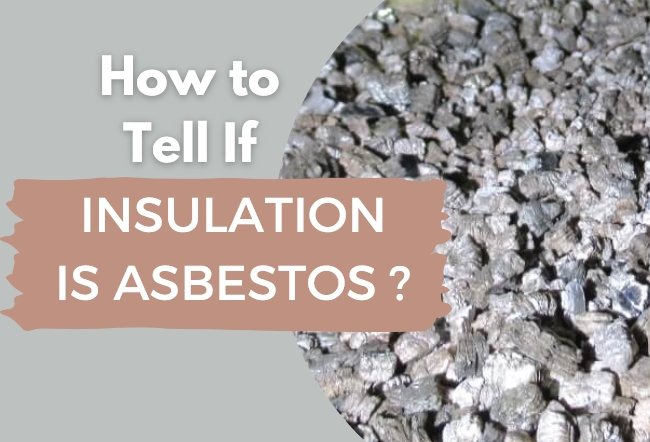Asbestos, a once highly favored material for insulation, was extensively used in homes built between the early 1900s and the 1980s. Its popularity stemmed from its remarkable fireproof and durable properties.
This material is usually applied to various parts of residential structures, including walls, floors, pipes, ductwork, and even structural beams. However, its dark side began to surface when its toxic nature became evident.
That’s why it is vital to know the essential information on how to tell if insulation contains asbestos, its dangers, and how to distinguish it from other insulation materials like fiberglass.
How to Tell if Insulation is Asbestos?
Asbestos insulation is notorious for becoming a hazard during renovations or repairs when it is disturbed, moved, or damaged. Disturbing asbestos insulation can release toxic fibers into the air, putting the health of occupants at risk. So, how can you tell if the insulation in your home contains asbestos?

The most reliable method to determine if your insulation is asbestos-laden is through professional testing. Asbestos testing companies can take small samples of your insulation and roofing materials to ascertain whether asbestos is present. To tell if a material contains asbestos, you can also identify it from the insulation types, such as:
- Blanket Insulation: Typically in the form of batts or large rolls, blanket insulation resembles a cotton-like blanket and is often used in attics and walls.
- Block Insulation: Rigid foam panels that are used in insulated areas.
- Loose-Fill Insulation: This insulation is blown into place and has a fluffy texture.
- Spray-On Insulation: Applied in liquid form, it expands and hardens to fill gaps, making it suitable for hard-to-reach areas.
- Vermiculite Insulation: Composed of heat-treated mica flakes, it can sometimes contain asbestos due to similar formation conditions.
Read also: Pole Barn Insulation Blanket
How Can You Tell The Difference Between Asbestos and Fiberglass?
One common question that arises is how to differentiate between asbestos and fiberglass insulation. Fiberglass insulation, like asbestos, consists of thin fibers, but it is generally considered safer. Besides that, fiberglass offers better temperature resistance and tensile strength.
Understanding these differences is essential to ensure safety. Fiberglass is a manufactured product, whereas asbestos is a naturally occurring mineral. As a result, asbestos is rarely found in fiberglass insulation, especially in modern fiberglass materials.
Asbestos is more commonly associated with loose-fill insulation, whereas fiberglass insulation is typically in batt or wool-like form. To identify asbestos in fiberglass insulation, you should consider the following factors:
● Age of the House
Asbestos may be present in loose-fill fiberglass insulation in homes built before the year 2000.
● Color and Texture
Insulation particles with a grey-brown or silver-gold color and an accordion-like texture may indicate the presence of asbestos.
● Fluffiness
Unlike typical fiberglass insulation, asbestos-laden insulation may lay flat rather than appear fluffed up.
Read also: Blown In Fiberglass Insulation Problems
Does Fiberglass Insulation Have Asbestos?
In conclusion, fiberglass insulation is generally considered safe and does not typically contain asbestos. However, it is essential to distinguish between these two insulation materials through the characteristics above to ensure safety in your home.
It’s also important to note that while fiberglass insulation is generally safe, asbestos may still be a concern in older homes, especially if constructed before the year 2000.
In such cases, if you suspect asbestos-containing insulation, it’s advisable to have it tested by professionals to ensure your and your family’s safety. However, the risk of asbestos contamination is extremely low in modern fiberglass insulation.
But to make sure of the safety aspect, you should know how to tell if insulation is asbestos since its exposure can lead to severe health issues, and its presence is still a concern in older homes. Understanding the risks and knowing how to identify asbestos insulation can help protect you and your family from its harmful effects.


